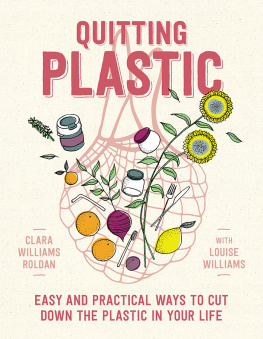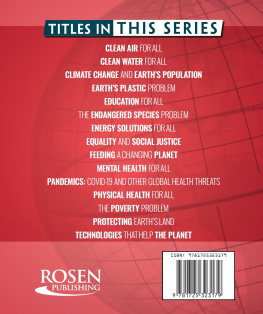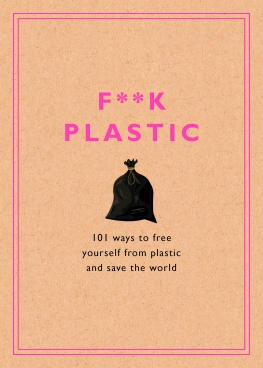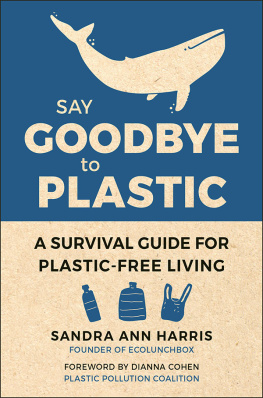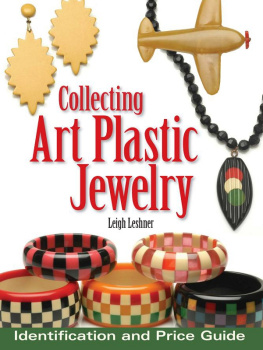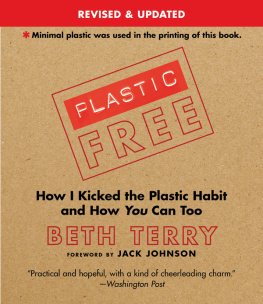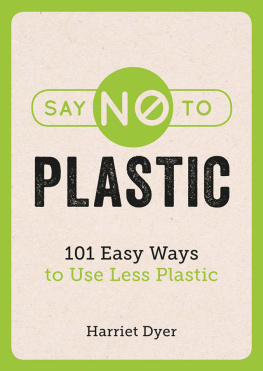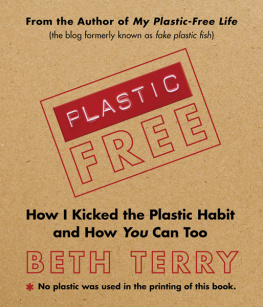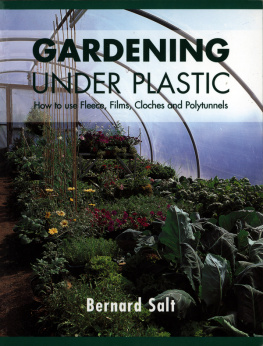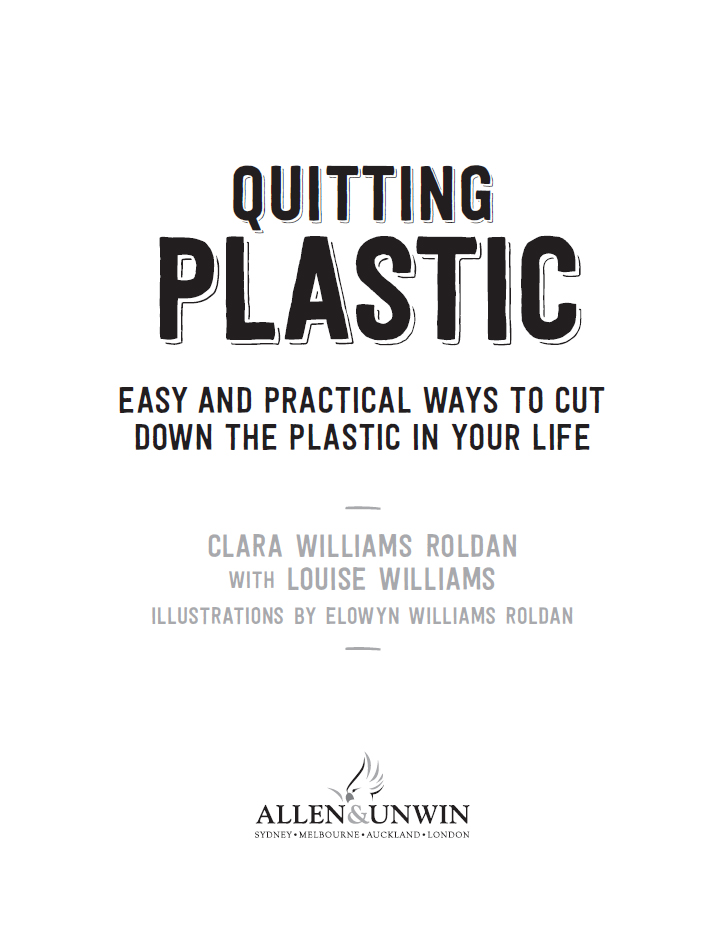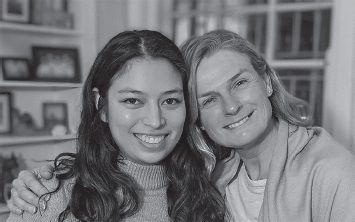
CLARA WILLIAMS ROLDAN is a young policy and legislative advisor in NSW Parliament. Witnessing parliament at work has convinced Clara that lots of individual actions which may seem small at the time can drive important changes in our lives. Clara is writing with her mother, LOUISE WILLIAMS, a Walkley-award winning journalist and writer with a lifelong interest in environmental protection. She has served on the Waste and Recovery Strategic Reference Group of the Northern Beaches Council in Sydney and is co-founder of the Baringa Bush Community Garden. Louise is the author of A True Story of the Great Escape.
First published in 2019
Copyright Clara Williams Roldan with Louise Williams 2018
All rights reserved. No part of this book may be reproduced or transmitted in any form or by any means, electronic or mechanical, including photocopying, recording or by any information storage and retrieval system, without prior permission in writing from the publisher. The Australian Copyright Act 1968 (the Act) allows a maximum of one chapter or 10 per cent of this book, whichever is the greater, to be photocopied by any educational institution for its educational purposes provided that the educational institution (or body that administers it) has given a remuneration notice to the Copyright Agency (Australia) under the Act.
Allen & Unwin
83 Alexander Street
Crows Nest NSW 2065
Australia
Phone: (61 2) 8425 0100
Email:
Web: www.allenandunwin.com

ISBN 978 1 76052 871 3
eBook ISBN 978 1 76087 052 2
Cover design: Madeleine Kane
Cover illustration: Estee Sarsfield
Dedicated to my wonderful grandmother, Margaret (Marga), who passed away during the writing of this book. Thank you for teaching me how to knit, for sharing the books you loved, making the best bolognese everand never being ordinary.
We all miss you so much.

I am a 27-year-old eco-warrior. Just kidding. But I do have an issue with plastic and how much we use.
When it comes to reducing plastic, it can sometimes feel like a battle. A battle against the sheer volume of plastic that has crept into virtually every corner of our daily lives. A slog through the immense number of blogs, how-to-guides and #hashtags to find good, practical information about why and how to use less plastic. Sometimes it feels like youve lost before youve even started.
I didnt quit plastic overnight. In fact, I havent got rid of it entirely. Thats partly because plastic is so intrinsic to our lives, quitting will always be a work in progress. And its also partly because Ive discovered there are some plastics we still need. This book is about avoiding the many, many plastics we really can do without.
Everyone has their own reason for wanting to quit plastic. Maybe you want to reduce waste; maybe you just want less stuff filling up your house, your bin and your life. Mine came down to health: my own and that of the environment.
Its no secret that plastic waste is overwhelming our natural environment. What you may not know is that virtually all the plastics ever manufactured are still with us, somewhere on earth. And, of all the plastic wrappers, packaging and bags we use, worldwide, about one-third leak into our oceans and natural environments. While recycling seems like a good solution, the reality is only nine per cent of all the plastics weve manufactured to date has been processed for re-use. Which explains how we have a floating island of plastic in the Pacific Ocean, the great Pacific Garbage Patch, thats almost as big as Queensland. Plastics durability, which makes it so useful and versatile, also means it doesnt break down like organic materials, leaving it to clog up our waterways and choke our ecosystems, wildlife and sea life. Putting it that way, it seems illogical that such a strong, high-performance material is used to make disposable items that we toss away, often within minutes and without a second thought.
And what about all the plastic we cant see? Microplastics are entering our ecosystemsand the food chainas plastics break down into tiny fragments. Even washing our clothes is fuelling the problem; synthetic fabrics shed billions of tiny fibres that run off into our waste water.
Its also worth considering that part of what makes plastic so hardwearing are chemical additives such as something called BPA (Bisphenol A). You may recognise it from the number of water bottles, Tupperware containers and even tin cans that now proclaim themselves BPA free. Thats because while BPA is great for making plastic more durable, transparent and heat resistant, in the human body it doesnt do such great stuff.
For me, quitting plastic has been an exercise of trial and error. It has been coffee spilled from leaking travel mugs, the absurd Tetris of trying to carry all my groceries in my arms when Ive forgotten a reusable bag, and that distinctive odour of sauerkraut that followed me everywhere when I was experimenting with apple cider vinegar as a substitute for hair conditioner. Its also been a family effort, as my first go at the age of sixteen challenged, and eventually galvanised, us all to find creative ways to reduce the plastic in our lives. Which is why I am writing this book with my mum, Louise (who knows a lot about both writing and plastics), why my younger sister, Elowyn, did the illustrations, and why my older sister, Premaa new mumwas such an invaluable source of information about how to be plastic-free with babies and toddlers.
Over ten years a lot has changed. The clunky online message boards I first sought out have been replaced with communities going plastic lite or plastic free and who are keen to share their tips. Theyve been followed by innovative businesses and manufacturers offering alternative materialsas well as an explosion in research and development (R&D) that is putting more and more plant-based bioplastics and compostable packaging made from plant fibres within reach.
If you are already actively taking steps to reduce your waste, youll know its pretty satisfying. I started using a reusable coffee cup in 2010, which, for someone at my level of coffee addiction, adds up to two less disposable cups and lids a day in landfill, for eight years. Thats approximately 5844 cups (I did the maths). Its powerful to see how much impact you can have as an individual.

LIVING WELL WITH LESS (PLASTIC)

I dont think we realised how much plastic was in our lives until we tried to reduce it.
At first I thought wed just go cold turkey, but then we realised it would have to be a process.
We wrote lists of things we wanted to change and we researched alternatives and their costs, so it took about three months to transition.

